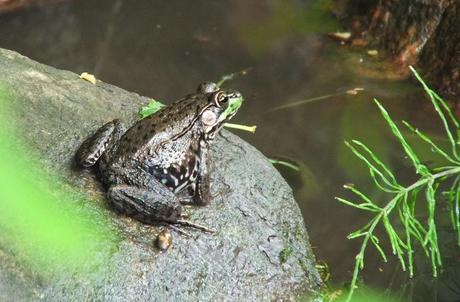The Brown Wasps by Loren Eiseley seeks to show the reader that it is both human and animal nature to cling to something that they know. Eiseley first shows this with the homeless men in the train stations, who refused to leave even after the officer asked them to leave. He then switches over to show the mouse, who was forced to run from his small meadow, attempting to build a home in Eiseley's flower-box, something that was familiar to him. He then examines the pigeons that would seek for food among the elevated railway's routes, from crumbs that would be littered around the vending machines and underneath the tracks. The pigeons still stayed even though the railway was abandoned, hoping to find some sort of food, before eventually leaving. When the construction workers came to take it down, the pigeons come back in hopes that it had re-opened. Eiseley then returns to making a human connection, using himself and a cottonwood tree that he and his father had planted years ago, and he had hoped was still alive. However, it wasn't.
Eiseley is a well-known nature-writer, teacher, and philosopher, and is well-known in both the scientific community and the literary community for his ability to write incredibly well, but still communicate scientific purposes. The Brown Wasps follows this, as he both shows the connection between animals and humans, but does it in a way that is pleasing to read. In order to do this, Eiseley uses description as a valuable tool in setting the scene, such as when he describes one homeless man in the station, saying, "One man after a slight, apologetic lurch, does not move at all. Tubercularly thin, he sleeps on steadily." (Eiseley, 240). This is the descriptiveness that runs throughout the essay, and helps the reader to appreciate what he is saying.
I believe that Eiseley accomplishes his purpose in The Brown Wasps. Through great description capturing the reader, Eiseley describes to the reader human and animal nature, and their similarities. His words also carry great weight in the scientific community, and he uses that here to convince the reader of his purpose.
 |
| Just as Eiseley returned to his old home expecting to find a tree, frogs return to their ponds and river, expecting it to be there, showing yet another example of the similarities between mankind and animals. Photo Credit |

